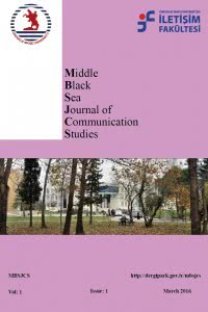Dostoyevki’nin “Kumarbaz” Romanının Yapısal Çözümlemesi
Dünya edebiyatında psikolojik realizmin önde gelen temsilcisi olan Dostoyevski, 1867’de yayımladığı Kumarbaz’da insanı, insan tabiatını ve insan gerçeğini başarılı bir şekilde anlatmıştır. Eser aynı zamanda yazarın hayatında önemli bir yer tutan kumar tutkusuna da ışık tutmaktadır. Bu makalede, yapısal çözümleme yöntemi kullanılarak, yazınsal iletişim açısından Dostoyevki’nin edebiyat dünyasına sunduğu katkı sistematik olarak belirim kazandırılmaya çalışılmaktadır. Çalışmada yönetimin sunumunu, kapsamlı analiz bölümü izlemekte ve sonuç bölümünde Kumarbaz’da oluşturulan derin yapı ortaya çıkarılmaktadır. Elde edilen bulgular yazınsal iletişim alanında çalışanlar kadar, edebiyat araştırmacılarına da yardımcı olabilecek niteliktedir. Dostoyevsky who is one of the prominent representative of psychological realism in the world literature, in “Gambler”, explains the human, the human nature and human reality in a successful way. The work also shed light to the passion of gambling which have a place in author's life. In this article Dostoyevski's contribution to literature in terms of literary communication will be clarified systematically through structural analysis. The method presentation is followed by an extensive analysis part and in conclusion, the deep structure formed in “Gambler” is revealed. The results reached after the analysis are of importance for literature researchers as well as for those who study literary communication.
Anahtar Kelimeler:
dostoyevski, kumarbaz, yapısal çözümleme, edebiyat
A Structural Analysis of F. M. Dostoyevsky’s ‘The Gambler’
Dostoyevsky who is one of the prominent representative of psychological realism in the world literature, in “Gambler”, explains the human, the human nature and human reality in a successful way. The work also sheds light to the passion of gambling which holds an important place in author's life. In this article Dostoyevski's contribution to literature in terms of literary communication will be clarified systematically through structural analysis. The method presentation is followed by an extensive analysis part and in conclusion, the deep structure formed in “Gambler” is revealed. The findings can be helpful for literature researchers as well as those working in the field of literary communication.
Keywords:
Dostoyevsky, gambler, structural analysis,
___
- KaynakçaDostoyevski, F. (1967). Mektuplar, Ararat Yayınevi, İstanbul, s. 100-101. Dostoyevski, F. (2010) Kumarbaz, Türkiye İş Bankası Kültür Yayınları, İstanbulGenette, G. (1980). Narrative discourse: An essay in method (J. E. Lewin, Trans.). New York, NY: Cornell University Press. (Orijinal baskı 1972’de yapılmıştır).Greimas, A. J. & Courtés J. (1983). Semiotics and language: An analytical dictionary (L. Christ et al., Trans.). Indiana: Indiana University Press. (Orijinal baskı 1979’da yapılmıştır)Jahn, M. (2012). Anlatıbilim (B. Dervişcemaloğlu, Trans.). Istanbul, TR: Dergah Publication (Orijinal baskı 2005’te yapılmıştır).Troyat, H. (2004) Dostoyevski, İletişim Yayınları, İstanbul, s. 242Öztokat, N. T. (2005). Yazınsal Metin Çözümlemesinde Kuramsal Yaklaşımlar, Multilingual Yayınları, İstanbulSuares, A. (1971) Dostoyevski, Hareket Yayınları. İstanbul
- Yayın Aralığı: Yılda 2 Sayı
- Başlangıç: 2016
- Yayıncı: Ondokuz Mayıs Üniversitesi
Sayıdaki Diğer Makaleler
Her Özgeci Birey Özgeci Davranır Mı? Otantiklik ve Dindarlığın Özgecilik Üzerindeki Rolü
Ulusal Gazetelerde Kültür Sanat Haberciliği Üzerine Bir Değerlendirme
Dijital Oyunlarda Şiddetin Estetiği: League of Legends Oyunu Üzerine Bir İnceleme
Reklamda Sportif Erkek Anlatısı
